When entering Vietnamese territory at Long Binh town, An Phu district ( An Giang province), Hau river splits into two streams. The main stream flows southeast towards Khanh An market, with other names such as Bassac river, or Bat-Sac, Ba-Thac river.
The tributary flows in a southwest direction, called Binh Ghi River, along the border between Vietnam and Cambodia, embracing nearly half of the left bank island.
When reaching Bac Dai junction, Binh Ghi river receives a large amount of water from Cambodia and is called Phu Hoi river by the people. When reaching Vinh Hoi Dong estuary, it has another name, Chau Doc river.
During the flood season, along the upstream rivers, it is not difficult to see "fishing ports" bustling with boats.
These are fish markets built by the people along the river for the convenience of purchasing seafood, as well as transporting and reselling to traders. Every year, those fish markets are crowded and bustling with buying and selling, which means that the people who fish here have a bumper harvest.
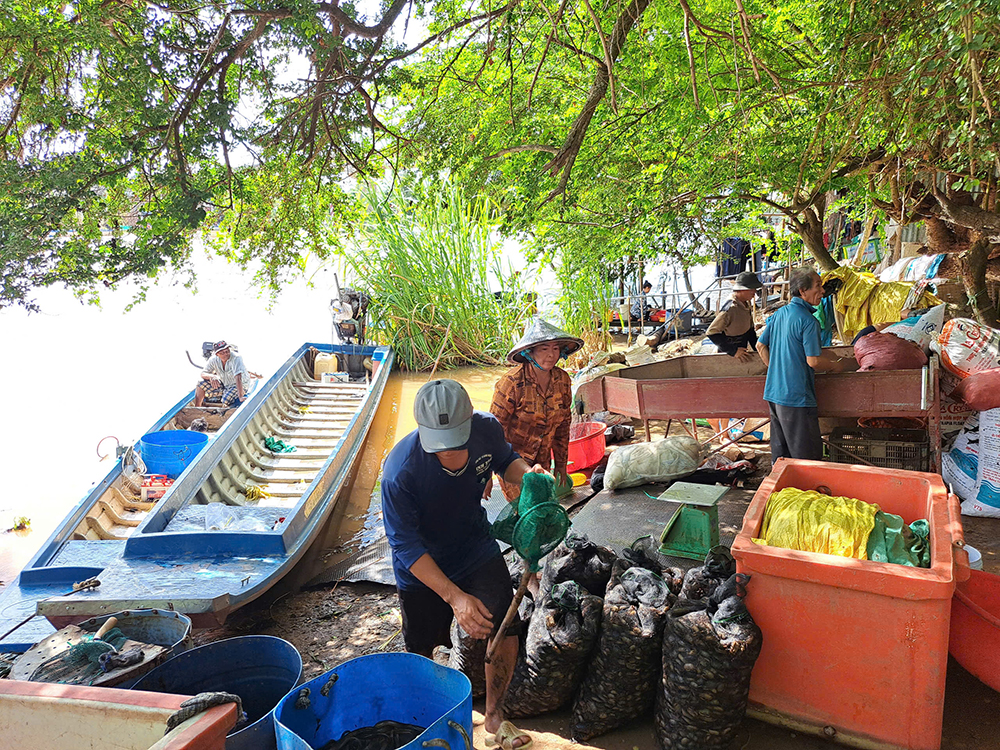
The freshwater fish market at the headwaters of the Hau River in An Phu district, An Giang province specializes in buying and selling freshwater fish, a specialty of the flood season.
We arrived at the “fishing port” at the source of Hau River in An Phu district, when it was still early morning, and saw dozens of boats moored close together. As soon as one boat finished weighing the fish, it immediately backed away so that another could pull in. Just like that, each port had nearly 20 workers, but they worked nonstop, everyone was sweating. However, in the dawn light, I could still see joy on everyone’s face.
Mr. Ut Lam and his wife finished selling 120kg of linh fish. While driving the boat, they counted the money they earned after a day of setting traps and took the opportunity to chat with us.
He said that this year, the water level rose a lot in the beginning of the seventh lunar month, then slowed down a bit at the end of the month. However, the amount of fish was quite stable. On average, he and his wife caught about 100kg of fish each day, and some days they caught up to nearly 200kg.
Although the price of linh fish sold as bait for catfish farming areas is only 5,000 VND/kg, for him, that is enough to cover his living expenses. Every year, during the dry season, he and his wife cultivate the rice field behind their house. When they see the water pouring in, they immediately prepare boats and nets for fishing.
When the water was on him, he and his wife immediately went down to the net. This year, he is 60 years old, but looking at Mr. Lam, he is still strong, his skin is dark from the sun and wind, his face is angular with a gentle smile always on his lips.
His wife sat behind the wheel and added that they had a house nearby, but during the flood season they liked to stay on the boat, visit fishing boats, sell fish, cook, and do everything while drifting on the water.
For nearly 40 years living together, every year the couple fishes when the water rises. Some years they spread nets, set hooks, set traps, and set traps. Recently, they switched to setting traps for the first linh fish of the season. When the water rises a bit, they switch to fishing until the water recedes.
They have 4 children, 3 of them are silversmiths, only 1 is a factory worker in Binh Duong . Although the fish sauce business has been profitable and unprofitable over the years, Ut Lam and his wife always believe that they will make a good living from this profession.
"If God gives you a lot, you eat a lot. If God gives you a little, you eat a little. But you certainly won't be hungry, so don't be afraid," said Ut, then laughed out loud, then started the boat and headed toward the border fields.
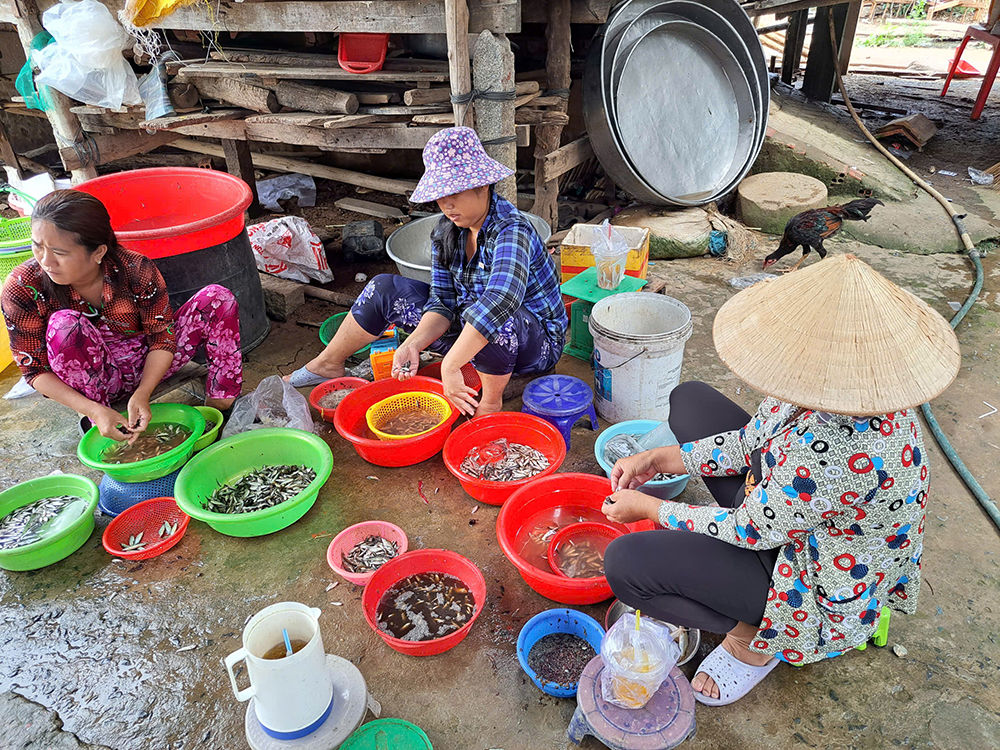
The fish market in the upper reaches of the Hau River in An Phu district, An Giang province is bustling with activity as muddy floodwaters pour in, bringing with them many types of flood season specialties.
Mr. Tran Van Ty (41 years old) owns a fish purchasing facility with 15 employees. He said that every day, his facility collects about 3 tons of fish, mainly young linh fish. A part of this fish will be sold to wholesale markets, and the majority will be ground and sold as bait for farming areas.
Mr. Ty confided: “Although this job is a bit hard because you have to stay up late and wake up early, carrying heavy fish, the income is quite stable. Each flood season, my facility makes a profit of about 200 million VND, and it also helps people in the neighborhood have jobs, so I am very satisfied.”
While talking to us, Mr. Ty's hands were still steadily scooping fish into the grinder. Mr. Ty added that his neighborhood had more than 10 fish purchasing facilities, and fishermen could stop by any of them if they wanted to sell. These facilities did not compete with each other because there were a lot of boats carrying fish every day.
I asked Mr. Ty if this area only buys fish, so where do people sell other products? Mr. Ty pointed to the opposite river bank, where there were several boats and barges moored, saying that they buy crabs, snails and other things. I immediately went across Nhon Hoi bridge to the river wharf where Mr. Ty pointed.
That is the seafood purchasing facility of Mr. Ba Phuoc’s family. Unlike other fish purchasing facilities, Mr. Ba Phuoc’s place does not hire workers, he and his wife are in charge of everything. If there are too many boats coming to sell, his children will come down to take over. The high floor is used as a place to put scales, styrofoam boxes, sacks and other things to serve the buying and selling.
Mrs. Ba Phuoc sat at a nearby table with several notebooks filled with data, a small computer, and a "bad" phone that kept ringing.
Mrs. Ba Phuoc said that her place buys about 2 tons of crabs and 1.5 tons of snails every day; and about 100kg of eels, rats, and frogs. Most of the crabs and snails are resold to be ground into powder to feed shrimp.
The big crabs, delicious snails, eels, frogs, and rats will be sold to wholesale markets. Mrs. Ba's family has been doing this job for 40 years. During the rainy season, they mainly buy crabs and snails, and during the dry season, they buy more rats, frogs, snakes, and eels.
“This upstream area has a lot of products during the flood season. People can catch them in any season. I just need to buy without forcing them to pay high prices. If I pay fairly, people will trust me and bring whatever they have to sell to me,” Mrs. Ba confided.
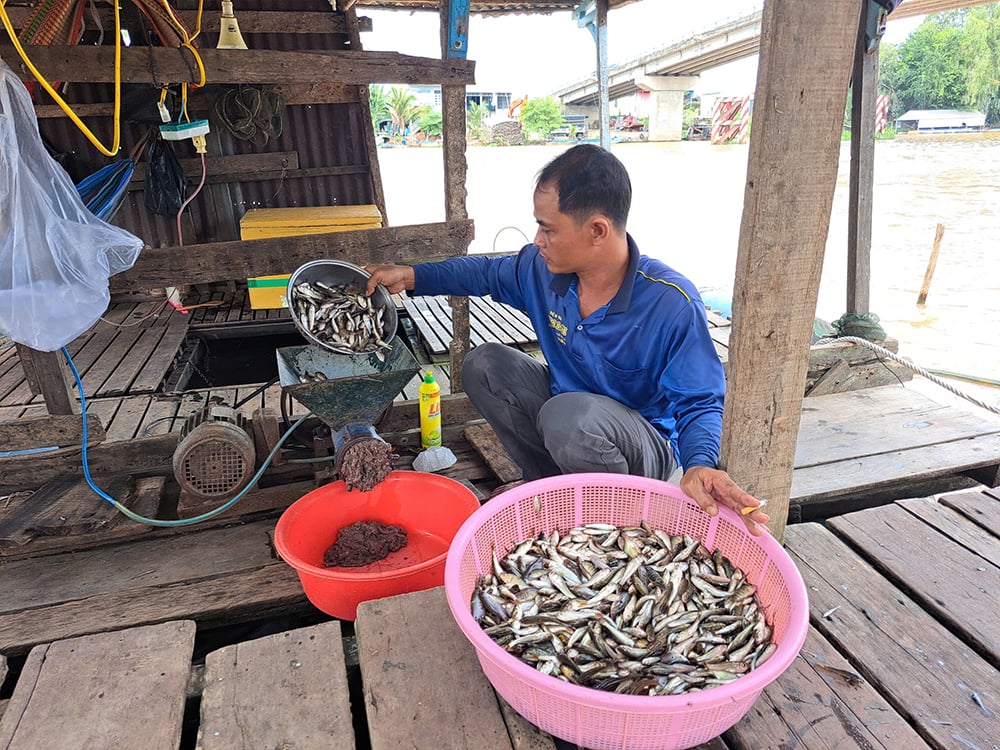
Among the many specialties of the flood season, the products of the floating season in the upper part of the Hau River flowing through An Phu district, An Giang province, cannot lack linh fish.
When we arrived, several boats loaded with crabs docked. Mrs. Ba Phuoc’s two children immediately jumped down to pick up each bag to weigh, then dumped it into a large tray to sort the crabs.
Mr. Ba Phuoc and his four grandchildren stood around the tray, their hands quickly pushing crabs of different sizes into the grooves on the tray. That was the way to classify “bait crabs” and “meat crabs” for easy resale. Mrs. Ba sat at the table, listening to her children read the weight of each bag of crabs, write it down in a book, and then calculate the payment to the seller. From adults to children, everyone did their part very skillfully because they had done it many times.
I sat at Mr. Ba Phuoc's purchasing place for about an hour, but counted 18 boats, all with shells coming to sell crabs and snails.
Whenever a boat stopped by, Mr. Ba’s family would roll up their sleeves and work quickly so that people could return to the fields to continue fishing. In his rare free time, Mr. Ba would teach his children how to classify meat crabs and bait crabs, and how to distinguish golden apple snails from sedge snails and rock snails. Mrs. Ba would call traders to inquire about the price of seafood, how much they were buying and how much they were selling.
I did not expect that in this small, remote border village, life would be so busy. Walking along the Binh Ghi River downwards, it is not difficult to come across “happy river wharves”.
The joy of the people when they catch fish and bring them here to sell, the joy of the purchasing establishments when they both earn income and create jobs for their relatives and neighbors. The voices and laughter always resound on these river wharves.
Source: https://danviet.vn/lu-ve-dau-nguon-song-hau-nuoc-chay-duc-ngau-cho-que-an-giang-bay-ban-la-liet-ca-dong-dac-san-20240922205623699.htm


![[Infographic] Notable numbers after 3 months of "reorganizing the country"](https://vphoto.vietnam.vn/thumb/1200x675/vietnam/resource/IMAGE/2025/10/4/ce8bb72c722348e09e942d04f0dd9729)


![[Photo] General Secretary To Lam attends the 8th Congress of the Central Public Security Party Committee](https://vphoto.vietnam.vn/thumb/1200x675/vietnam/resource/IMAGE/2025/10/4/79fadf490f674dc483794f2d955f6045)




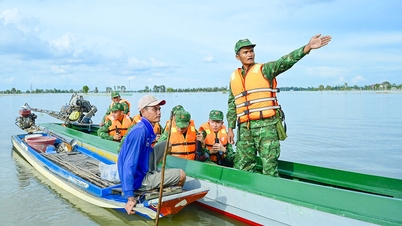






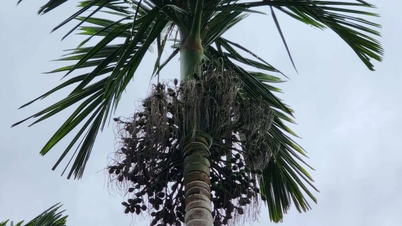





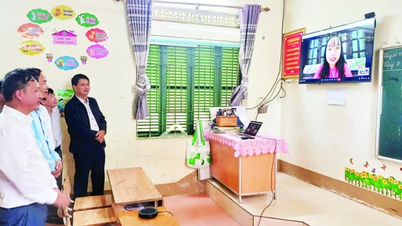
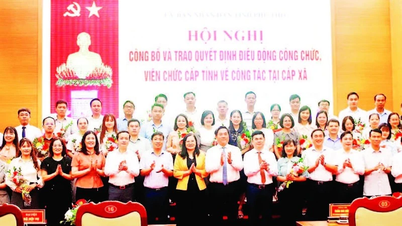
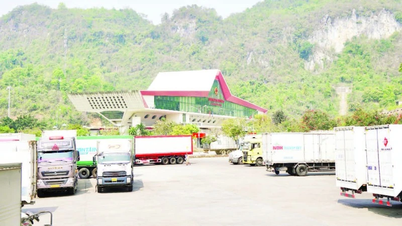
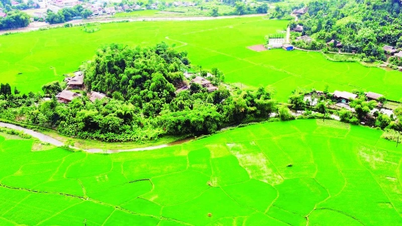








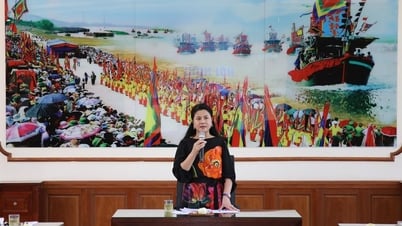
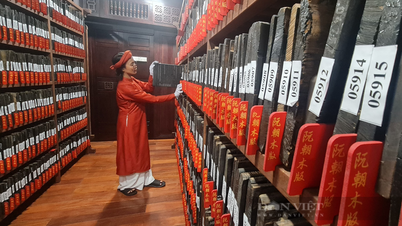
![[Photo] Students of Binh Minh Primary School enjoy the full moon festival, receiving the joys of childhood](https://vphoto.vietnam.vn/thumb/1200x675/vietnam/resource/IMAGE/2025/10/3/8cf8abef22fe4471be400a818912cb85)
![[Photo] Prime Minister Pham Minh Chinh chairs meeting to deploy overcoming consequences of storm No. 10](https://vphoto.vietnam.vn/thumb/1200x675/vietnam/resource/IMAGE/2025/10/3/544f420dcc844463898fcbef46247d16)















































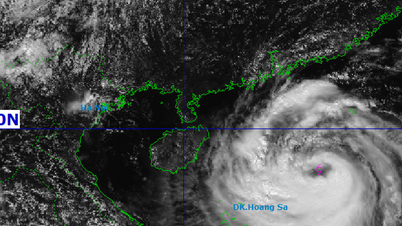

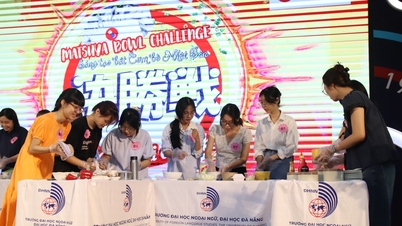



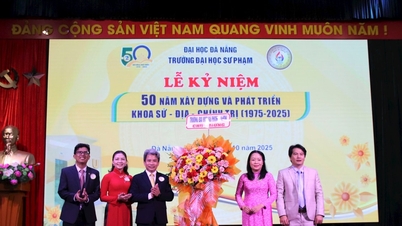
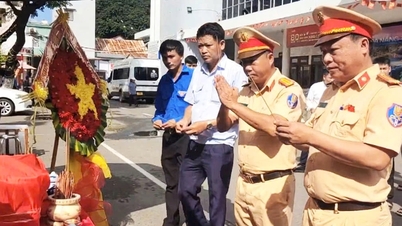
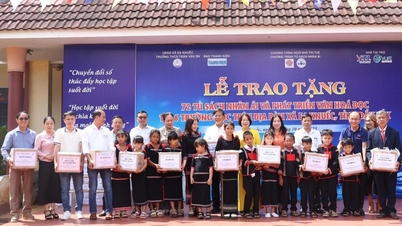







Comment (0)